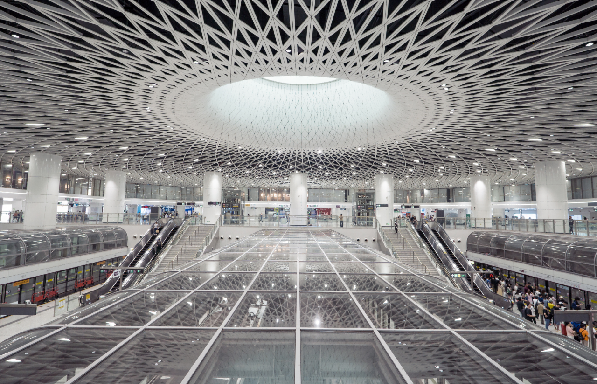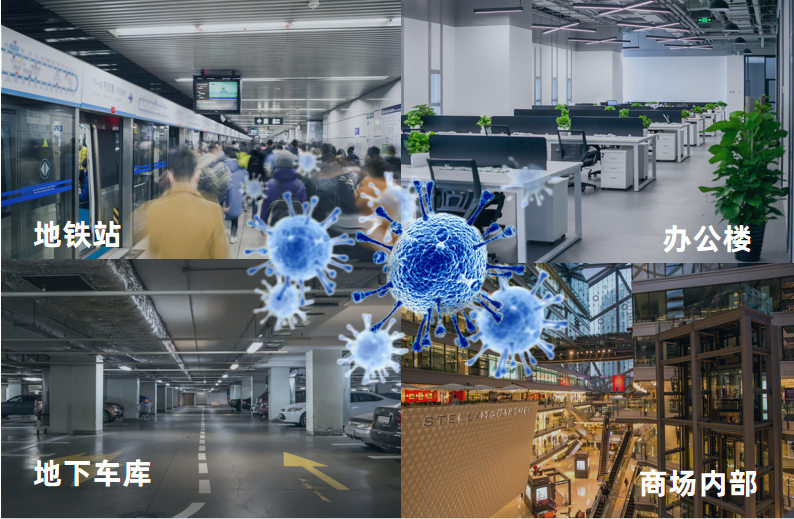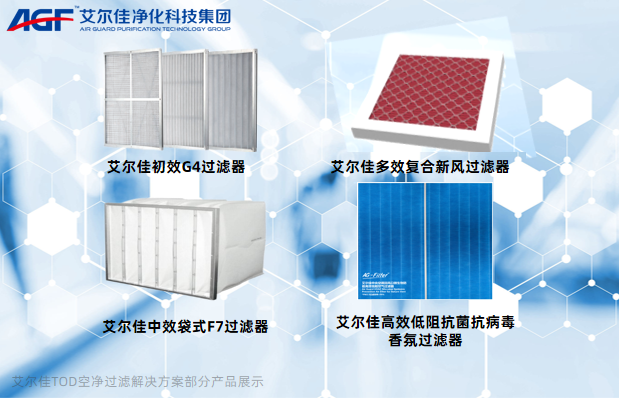01. What is TOD?

TOD: A New Paradigm for Urban Intensive Development
With the acceleration of urbanization, TOD (Transit-Oriented Development) has become a crucial direction in modern urban planning. TOD complexes, centered around metro stations, integrate commercial, office, residential, and transportation functions, characterized by high foot traffic, diverse functionalities, and complex spatial layouts. In such intricate urban public spaces, air quality management has emerged as a key factor influencing citizens’ living experience and healthy lifestyles.
02. Three Major Challenges of TOD Air Management

- Diverse Spaces, Complex Pollution Sources
Metro Stations: Dust from rail abrasion, metal particles, bacteria, and viruses carried by crowds.
Shopping Malls: Contaminated return air from HVAC systems, VOC odors, and volatile compounds.
Office Buildings: Formaldehyde and benzene compounds released from office equipment and building materials.
Underground Parking: Residual particulate matter from vehicle exhaust.
2. Interconnected Ventilation Systems Facilitate Cross-Contamination
TOD complexes often rely on centralized HVAC and air supply systems. If pollution sources are not effectively controlled, cross-contamination can easily occur.
3. High Foot Traffic and Prolonged Exposure
Office workers spend an average of 8 hours daily, while residents engage in activities for over 12 hours. Continuous movement means air quality directly impacts public health and safety.
03. Air Guard’s Air Purification and Filtration Solution

To address TOD air quality challenges, Air Guard engineers have developed a systematic solution—enhancing the “respiratory health” of TOD spaces with greater efficiency, durability, and architectural compatibility.
1. Targeted Multi-Stage Filtration Strategy
Customized solutions for different TOD zones (e.g., metro concourses, malls, parking garages, offices):
– Air Guard G4 Pre-Filter: Captures particles ≥10μm, extending the lifespan of subsequent filters. Ideal for metro vents and garage air supply systems.
– Air Guard F7 Medium-Efficiency Pocket Filter: Features deep-gradient filtration and high dust-holding capacity, effectively filtering PM2.5. Suitable for intermediate filtration in office and mall HVAC systems.
– Air Guard Multi-Effect Fresh Air Filter: Combines formaldehyde removal, odor elimination, and sterilization. With antibacterial, chemical adsorption, and high-efficiency particulate layers, it achieves >95% antimicrobial efficiency and ≥99.95% PM2.5 removal. Perfect for commercial HVAC outlets.
– Air Guard High-Efficiency Low-Resistance Antimicrobial & Scented Filter: Utilizes triple antimicrobial technology (99.99% efficacy) infused with plant-based fragrance for enhanced comfort. Ideal for upscale retail spaces.
2. Reduced Maintenance Costs – Long-Lifetime Filter Design
– 6-month maximum replacement cycle
– Reusable filter structures for easy replacement
– Minimized operational disruption and improved management efficiency
3. Architectural Compatibility – Flexible & Easy Installation
Standardized modular designs seamlessly integrate with TOD air ducts, HVAC units, and split ventilation systems. Suitable for both new projects and retrofits, ensuring rapid deployment.
4. CNAS-Certified Laboratory – Authoritative Testing & Validation
Air Guard operates a CNAS-accredited lab (No. L18323), equipped with DIN-compliant VOC detection systems and dual-wind tunnel test platforms. Our lab validates critical metrics—filtration efficiency, airflow resistance, service life—ensuring compliance with national and international standards.
—
04. Urban Health Begins with Every Clean Breath
TOD complexes—hubs linking transit, commerce, and daily life—embody a city’s modernity and service ethos. Air Guard focuses on these “invisible corners,” mitigating risks from PM2.5, viral aerosols, and toxic gases to create safer, healthier public spaces.
We elevate urban health through clean air, empowering “Healthy Cities” where technology and well-being coexist, and development thrives in harmony with ecology.
